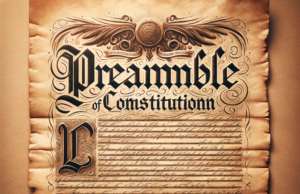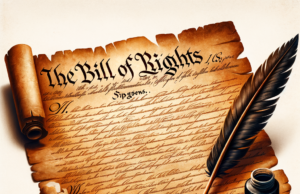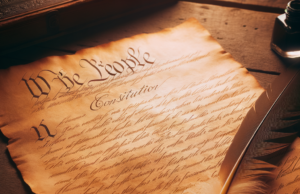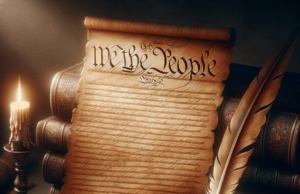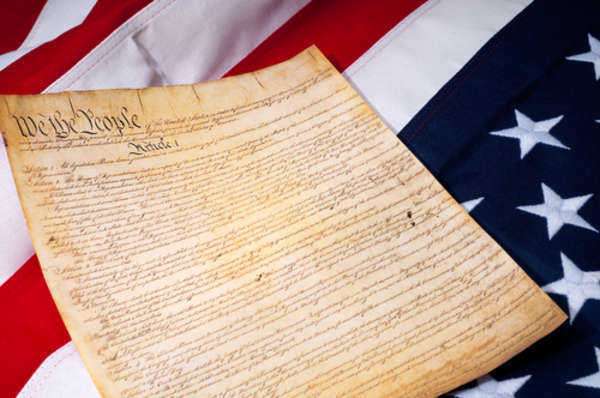Table of Contents

John Jay: The First Chief Justice and the Case of Chisholm v. Georgia
John Jay served as the first Chief Justice of the United States Supreme Court from 1789 to 1795. During his tenure, he presided over many significant legal cases, including the case of Chisholm v. Georgia in 1793. This case is one of the most significant in the history of the US legal system and helped to shape the relationship between the federal government and the states. In this article, we will explore the case of Chisholm v. Georgia, including its context, the legal arguments made, the outcome, and its implications for the US legal system.
The Case
The case of Chisholm v. Georgia arose from a dispute over the payment of wartime debts incurred by the state of Georgia during the American Revolution. Alexander Chisholm, a South Carolina resident and executor of the estate of a British citizen, filed a suit against Georgia in the United States Supreme Court, seeking payment for goods and services provided to Georgia during the war. Georgia refused to pay the debt, arguing that it was immune from lawsuits filed by citizens of other states.
Legal Arguments
At the heart of the case were two legal arguments. Chisholm’s lawyers argued that under the Constitution, the Supreme Court had the power to hear cases involving disputes between citizens of one state and another state. Georgia’s lawyers, on the other hand, argued that the Constitution did not give the Supreme Court the power to hear such cases, and that states were immune from lawsuits filed by citizens of other states.
The Outcome
In a narrow 4-1 decision, the Supreme Court ruled in favor of Chisholm, holding that states were not immune from lawsuits filed by citizens of other states. The decision sent shockwaves through the fledgling American legal system, as it challenged the notion of state sovereignty and the power of the federal government to regulate state actions.
Implications for the US Legal System
The case of Chisholm v. Georgia had far-reaching implications for the US legal system. It established the principle of federal judicial power over state actions and laid the groundwork for later cases, such as Marbury v. Madison (1803), which established the principle of judicial review. It also helped to establish the supremacy of federal law over state law, a principle that remains a fundamental tenet of the American legal system today.
Interesting Facts
- Chisholm v. Georgia was the first case heard by the United States Supreme Court that involved a dispute between a state and a private citizen.
- The case was closely watched by many in the United States, as it challenged the power of the states and the federal government.
- The decision in the case was controversial and sparked a debate over the role of the Supreme Court in the American legal system.
- John Jay, as Chief Justice, presided over the case and wrote the opinion for the majority.
- The case was heard during a time of significant political and social change in the United States, including the growing debate over the role of the federal government in regulating state actions.
- The decision in the case helped to establish the principle of federal judicial power over state actions, which remains a key tenet of the American legal system today.
- The case helped to establish the supremacy of federal law over state law, which played a significant role in the development of the American legal system.
- The decision in the case was controversial and sparked a debate over the role of the Supreme Court in the American legal system.
- The case was influential in establishing the power of the federal government to regulate state actions, which played a significant role in the development of the American legal system.
- The case helped to establish the idea of federalism in the American legal system, which remains a cornerstone of American political and legal thought today.
Conclusion
The case of Chisholm v. Georgia was a landmark decision in the early development of the American legal system. It challenged the power of the states and the federal government and helped to establish the principle of federal judicial power over state actions. The decision had far-reaching implications for the American legal system, influencing the development of key legal principles such as the supremacy of federal law over state law and the principle of federalism. As such, it remains an important case in the annals of American legal history and a key part of the legacy of Chief Justice John Jay.
John Jay assumed many roles during his life. Born to a wealthy family of merchants in 1745, he always had a prominent role in New York City. Documented as the first Chief Justice of the United States Supreme Court, his political life successfully geared him for all the important roles he assumed.
During his first public role he served as Secretary to the New York Committee of Correspondence. John Jay’s later role as Chief Justice to the Supreme Court intensified his political views and governance of the United States. In 1789, John Jay was appointed as the first Chief Justice of the Supreme Court by President Washington. Being the first appointed Chief Justice, many of the duties and responsibilities delegated by the Supreme Court was initiated by John Jay and his members. John Jay’s primary functions as Chief justice were to oversee the Supreme Court during public sessions, as well as preside over private conferences, while the chamber of members discussed the rulings of different cases.
Being the first appointed Chief Justice, John Jay had to set the tone in the manner the Supreme Court would operate. With no set practice of the Supreme Court in the Constitution, in the first decade of the judicial system, the Supreme Court was known as the weakest link of the three branches of government. The implementation of John Jay and his views on how things should operate helped strengthen the judicial system overall.
During his reign as Chief Justice from 1789-1795, John Jay reviewed important cases which helped the Supreme The court gains recognition as an honorable institution. When John Jay first assumed power as Chief Justice, most of his time was spent establishing practices and protocol. John Jay demonstrated the act of fair treatment within the Supreme Court system.
As Chief Justice three major cases were presented under John Jay’s ruling. The first case, Chisholm v. Georgia, involved the right of private citizenship of one State to sue another. John Jay agreed with the conditions of this case and implemented the ruling giving an individual the right to sue another State. This is allowed under the affiliation of a corporation denouncing the practice of sovereign rights. This ruling, however, was later
overruled by the Eleventh Amendment to the Constitution. Other similar cases involved other State to State appeals, as well as the role of foreign government policies and the United States.
His concerns about politics and warfare lead John Jay to implement the Jay Treaty during the term he served as Chief Justice in 1794. This Treaty was implemented to shift the odds of war between the United States and Great Britain. It also helped solve a number of problems that came about as a result of the American Revolution. Under the John Jay Treaty, fair trade between countries increased and it also helped the first colonies gain their separation from British practices. The Treaty also helped the United States gain access to the North Western Territories.
John Jay’s strong political force and practice of fair ruling lead Washington to renominate John Jay as Chief Justice in 1795, which he declined. John Jay continued to be a political influence to the United States and internationally as well, retiring from the political world under the presidential reign of John Adams.













